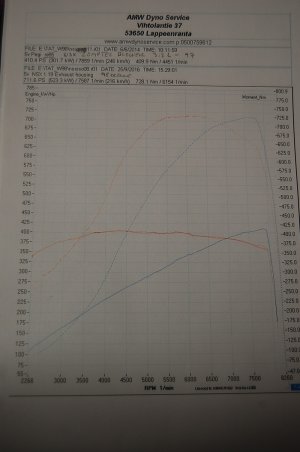There is no 'one size fits all' for turbo choice. Smaller turbos spool quicker and typically have better transient response. I like your high compression build, which greatly improves overall efficiency and reduce lag, but GT30s & GT35s have their place. I've driven many NSXs with both and while they won't make the power of your GT40, it may be a better fit for many who like the low rpm instant response of superchargers.
So you are measuring 'crankshaft' power numbers, not power at the 'wheel'? -That's a pretty important distinction.
Well it does not matter how you measure power increase. Starting point is 268 hp and now 711 hp . So it makes 2,65 times more power at 15,22 psi . This side "lake" /europe we use engine power.
Our dyno softwares are build that way ? This TAT system is mayby one of the best. Car manufacturers used same software .






